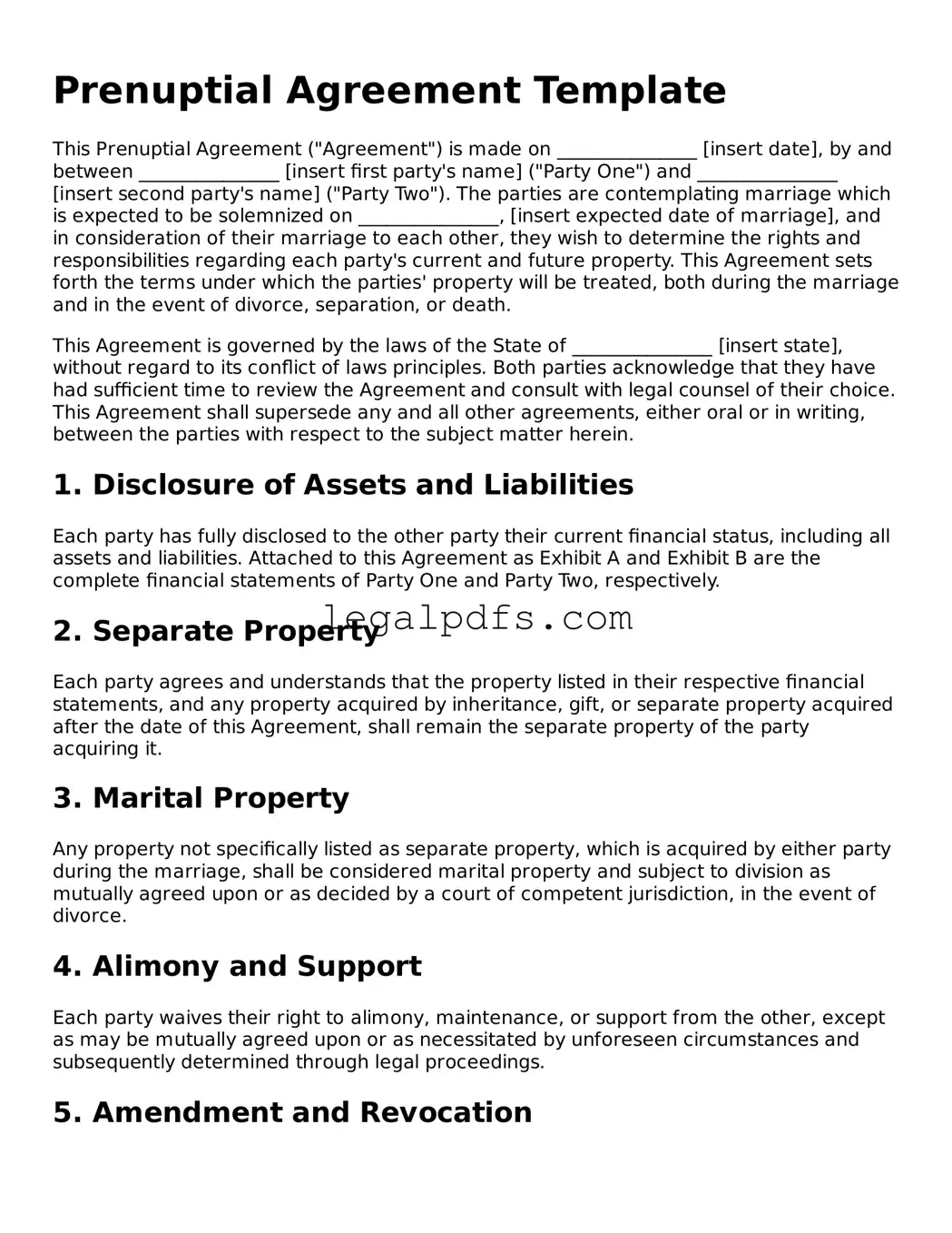Prenuptial Agreement Template
This Prenuptial Agreement ("Agreement") is made on _______________ [insert date], by and between _______________ [insert first party's name] ("Party One") and _______________ [insert second party's name] ("Party Two"). The parties are contemplating marriage which is expected to be solemnized on _______________, [insert expected date of marriage], and in consideration of their marriage to each other, they wish to determine the rights and responsibilities regarding each party's current and future property. This Agreement sets forth the terms under which the parties' property will be treated, both during the marriage and in the event of divorce, separation, or death.
This Agreement is governed by the laws of the State of _______________ [insert state], without regard to its conflict of laws principles. Both parties acknowledge that they have had sufficient time to review the Agreement and consult with legal counsel of their choice. This Agreement shall supersede any and all other agreements, either oral or in writing, between the parties with respect to the subject matter herein.
1. Disclosure of Assets and Liabilities
Each party has fully disclosed to the other party their current financial status, including all assets and liabilities. Attached to this Agreement as Exhibit A and Exhibit B are the complete financial statements of Party One and Party Two, respectively.
2. Separate Property
Each party agrees and understands that the property listed in their respective financial statements, and any property acquired by inheritance, gift, or separate property acquired after the date of this Agreement, shall remain the separate property of the party acquiring it.
3. Marital Property
Any property not specifically listed as separate property, which is acquired by either party during the marriage, shall be considered marital property and subject to division as mutually agreed upon or as decided by a court of competent jurisdiction, in the event of divorce.
4. Alimony and Support
Each party waives their right to alimony, maintenance, or support from the other, except as may be mutually agreed upon or as necessitated by unforeseen circumstances and subsequently determined through legal proceedings.
5. Amendment and Revocation
This Agreement may only be amended or revoked by a written document signed by both parties. Any changes to this Agreement must be in writing and signed by both parties to be effective.
6. Governing Law
This Agreement shall be governed by and construed in accordance with the laws of the State of _______________ [insert state], without regard to its conflict of laws rules.
7. Entire Agreement
This document and its exhibits constitute the entire agreement between the parties regarding prenuptial arrangements and supersedes any prior understandings or agreements, whether written or oral. The parties confirm that no promises, agreements, or representations, other than those stated herein, have been made to induce them to execute this Agreement.
8. Acknowledgment
Each party acknowledges that they have read and understood this Agreement, are fully aware of its content and effect, and enter into it freely and without duress or undue influence.
Signed:
____________________ [Party One's Signature]
Date: _______________
Signed:
____________________ [Party Two's Signature]
Date: _______________
Witnessed by:
____________________ [Witness's Name]
Date: _______________
